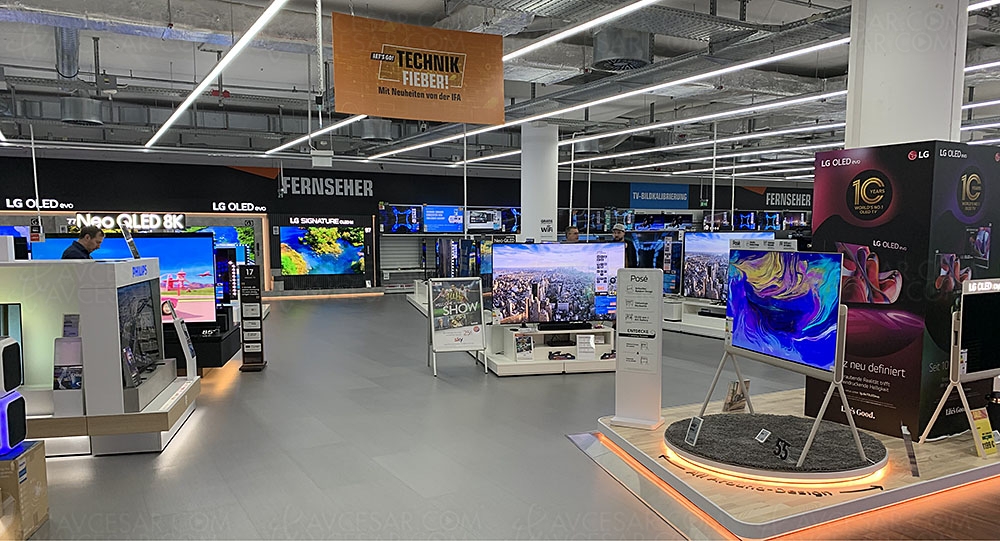Rein is no longer going for the Oled TV market. Already decreasing in 2022 (see our Oled TV Market 2022 news, zoom on the drop in sales), it would contract sharply in 2023, by -24% according to the market research organization Omdia, from 7 .5 million units sold in 2022 to only 5.7 million. This more or less confirms another report published in the spring which predicted a market drop of -29% (see our Oled Market 2023 news: -7% in value, the worst to come for TVs), to which many specialists did not want to give credit, no doubt foreseeing its recovery in the second half of the year.
Oled TV 2023, only 2.2% of the global TV market
Looking at the figures in detail, we note that sales of LG Display Oled TV panels are expected at 4.7 million copies compared to 6.4 million in 2022. For its part, Samsung should therefore sell 1 million panels QD Oled compared to 1.1 million last year. And if we hoped to put this poor performance into perspective by considering the drop in shipments of LCD TV panels, this is ultimately not the case. This would in fact show a decline of 5.6% “only†with a total of 248.1 million for LCD TV panels compared to 262.8 million in 2022. Ultimately, the penetration rate of Oled TV panels on the The entire TV market would stand at 2.2%, a mediocre figure that the industry has not seen for a long time.
Oled TV market, has the peak already passed?
A situation which, ceteris paribus (all things being equal), makes a growing number of sector analysts say that the peak of the Oled TV market, only ten years after its emergence, has already passed. The Oled TV market segment would therefore not have resisted Chinese competition, capable of offering very large broadcasters (increasingly larger each year) with image quality now considered sufficient, thanks to the contribution of the Mini LED process, by the vast majority of consumers and at ever more competitive prices. And as the increase in diagonals, with White Oled and even QD Oled technologies, is inexorably accompanied by a significantly greater increase in prices than for LCD, screen industry analysts predict that the segment Oled TV is, and will remain, a niche market, with no real prospect of progression. At least until the arrival of IJP Printing Oled (Ink-Jet Printing Oled) technology, the expected manufacturing cost of which is significantly lower than that of White Oled and QD Oled processes, once the launch phase has been amortized.
However, the possible emergence of Ink-Jet Printing Oled technology on the TV market (it remains to be seen the cost price of large LCD diagonals in a few years which could further decrease tangibly...) would not be beneficial. advantage of Samsung and LG but of TCL which has been working on its development for several years and whose first suitable screens (computer monitors to begin with) are announced for the end of 2024 or 2025 (see our Oled TV news TCL (Ink-Jet Printed ) in 2025?).
Oled TV market, strategic changes coming to manufacturers
As we can see, the Oled TV market segment is really struggling in 2023. Without a good Black Friday which saw dynamic Oled TV sales for both LG and Samsung, it would have even come close to disaster with even more worrying figures. The situation for the 2022/2023 period, however, appears serious enough to induce major strategic changes within the Samsung and LG groups and their subsidiary Samsung Display and LG Display, which we will address very soon in a future news item.
